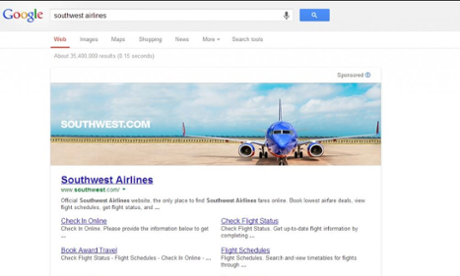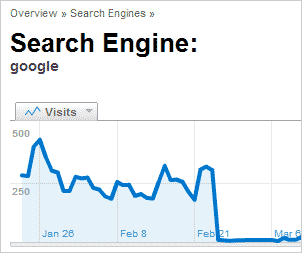The latest round of Google algorithm changes may have had a near-devastating impact on your businesses and the way you do lead generation. The impact of these changes can be felt both financially and emotionally. I have one story of business that had 15 employees in his web business that was selling classic american car parts that is now down to one employee. Their business was absolutely shattered by these updates and they did not have a backup plan for getting new business . While it is important to understand the changes so you can understand how to work around them and continue to grow your business through lead generation. What is more important is that you start to build a post SEO strategy for lead generation and sales.
What’s Going On?
The Google algorithm changes have cute names like Penguin, Panda and Hummingbird but the results are far from benign. The main purpose of these changes are to weed out poor quality back links, web spam and tactics that Google considers spammy for building back links.
As I take a step back, you need to understand that just because a tactic worked in the past, does not mean that it will work in the future – but Google took it one step further and is now using those negative tactics as penalties towards your site right now.
The result is that your business is probably slipping further down in search rankings, or you have disappear from search results completely. You’ve probably spent spent countless hours and countless dollars trying to counteract these penalties by disavowing these bad links, increasing your spend on paid marketing, blogging, guest blogging, press releases, building new links or shifting to social media for new leads.
However even as business owners and managers add creativity in their lead generation efforts. They must also pay close attention to the quality of the leads that they create and how these leads are processed and nurtured.
They say that the cheapest way to improve revenue is to sell more to your existing customer base. These are the people that have trusted you in the past and with whom you have a relationship. Recovery is going to take a while depending on your penalty and you’ll need revenue to continue operations.
Is organic SEO dying?
Well the demise of SEO has been predicted for the last 15 years, and while I don’t think that it is going to go away completely I do feel that the rules have been inextricably changed. Google has just announced that they will now be showing banner ads on their search results page something that they vowed never to do.

This change effectively looses another 32% of the natural search results (eroded with the existing sitelinks and maps section) on each page, making it harder to rank well organically and be found on the first page.
What can you do about this?
As I mentioned above it is incumbent on every business owner to diversify their approach to lead generation and lead nurturing. My suggestions are to shift some of your spend to Google PPC advertising – with one major caveat…you have to send this traffic to landing pages, not to your website main page. Chances are your website is build for providing information and is not really strong on it’s calls to action.
Unlike organic traffic, paid traffic needs to be handled as if you are playing the direct response marketing game. You create an offer, they click on the ad, you send them to landing page and try get them to contact you either on the phone or by filling in a form.
Lifecycle Marketing
For businesses that have an existing customer base and are looking to add new revenue then a process called lifecycle marketing may be an answer to the Google issue. By leveraging adopting the stance of providing information and education to customers and prospects alike it can be the difference between reaching current and potential customers, or seeing your marketing efforts go to waste while your competition thrives.
When implemented correctly lifecycle marketing nurtures your existing customers and helps to do lead generation that keeps you on Google’s good side. Just by the nature of nurturing your customers you’ll have the opportunity to upsell or ask for referrals while continuing to provide value.
A famous sales persona and author Chet Holms said that only 3% of your audience is ready to by at any one time. Which means that while they may be candidates for your service, they may just not be ready yet. Lifecycle marketing helps you to deliver the right message at the right time, so your lead generation efforts won’t be wasted and nurture those relationships until they are ready to make a choice to buy from you.
Putting It Into Practice
Learning all the nuances of the Google changes and then using this information to create a viable lead generation plan can be difficult for even those who are well-versed in the subject. And if you aren’t an expert, it can take hours of wading through tutorials and guides to even get the basics down.
Thankfully, there is help if you need a little assistance. Lifecycle marketing software takes the guesswork out of lead generation and basically does the work for you. Lifecycle marketing software can help you set up an effective marketing campaign that will bring more hits to your website from those who are looking for what you have to offer. These visitors will turn into leads, which you can then convert into sales. Then, by offering stellar customer service, you can turn these customers into repeat customers. You can also expand your client base by obtaining referrals from your customers.
If you aren’t taking advantage of lifecycle marketing software to help grow your reach on the web, you are losing out on customers and sales. Contact us today and let us help you find a solution for your business, so you can reap the benefits.





